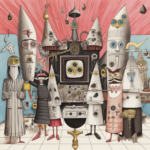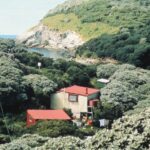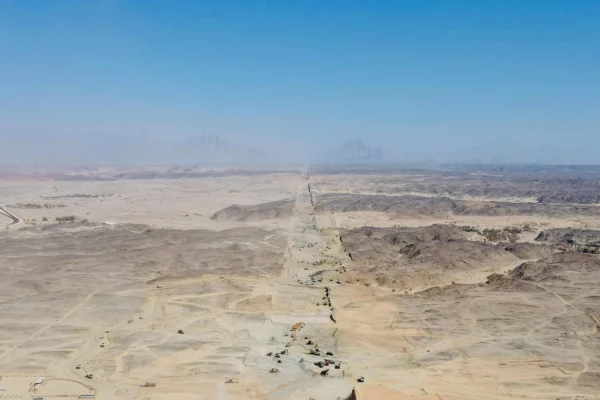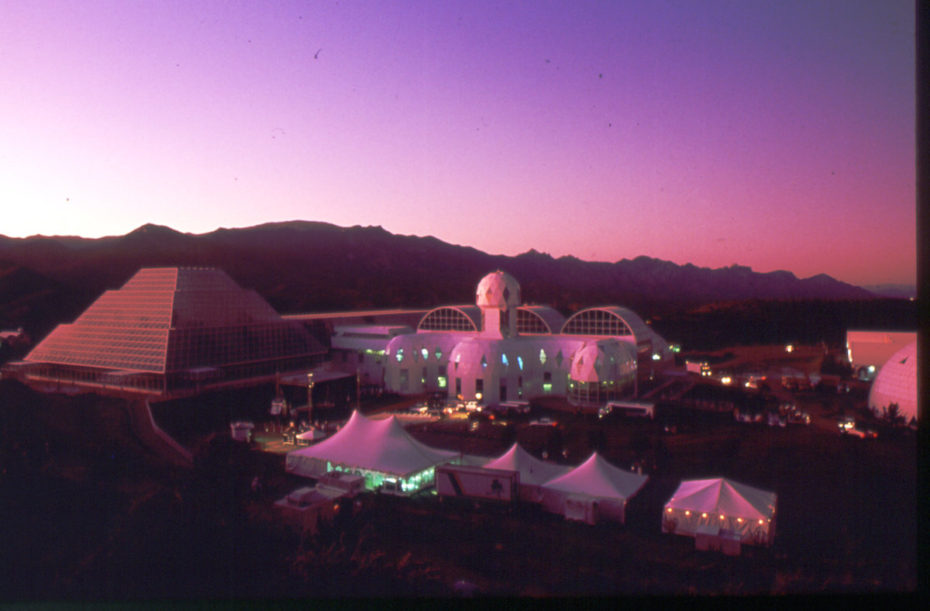
It may sound (and look) like something from a sci fi movie, but it’s a real place. In the middle of the desert, beneath a glass dome, are wetlands, savannah grasslands, a rainforest, fog desert and an ocean with a coral reef. Constructed between 1987 and 1991 in Oracle Arizona, Biosphere 2 remains the largest closed system in the world, and contains five biomes which include an agricultural system, a human habitat and underground infrastructure. The 3.14-acre facility was built to test if humans could live inside a sealed ecosystem, cut off from the outside world for an extended period of time. It was intended as a prototype for future human colonies in space, but things didn’t quite go as planned…
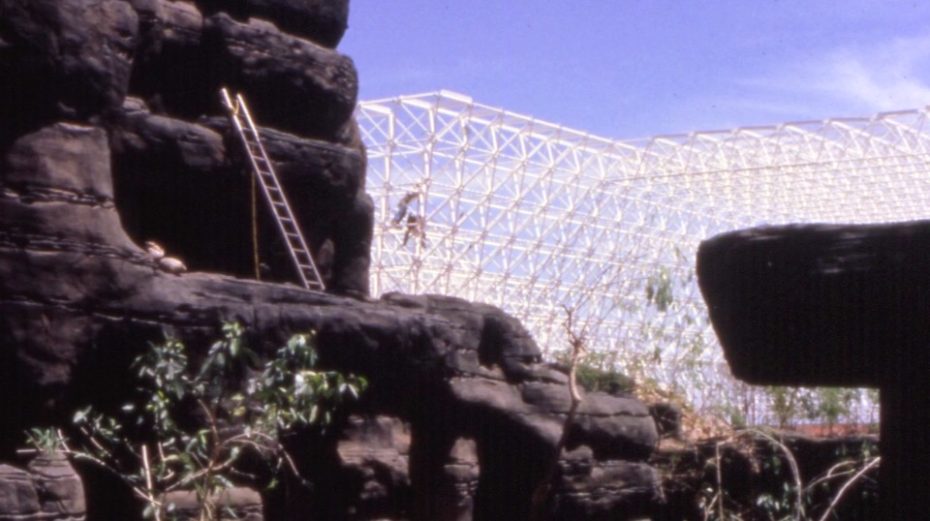
The goal was ambitious and media attention and controversy surrounded it from the beginning. Its name “Biosphere 2” came from the intention for it to be the second fully self-sufficient biosphere after Earth (the so-called Biosphere 1). The $150 million project was funded by Edward Bass, an heir to a Texas oil fortune who had abandoned his studies at Yale in the 1970s to set out and explore the world. Instead he ended up in New Mexico, at a place called Synergia Ranch, an “unusual counterculture group”, where he became close friends with the founder, a former metallurgist named John Allen. It’s been claimed that Ed Bass was indoctrinated by this “counterculture” group, and essentially talked into bankrolling Biosphere 2, an idea that was largely conceived by John Allen himself– but more on that suspicious theory in a moment…
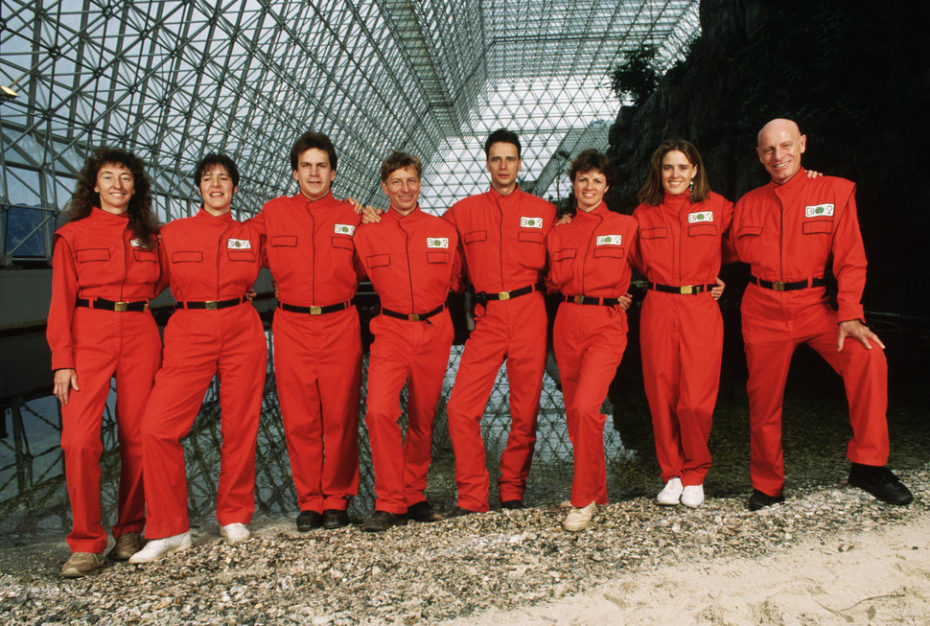
Eight researchers were chosen as the project’s “Biospherians”, and upon completion of the structure in the fall of 1991, the world media was invited to witness the crew members as they sealed themselves inside the Biosphere 2 to spend two years living in a self-sustaining habitat.
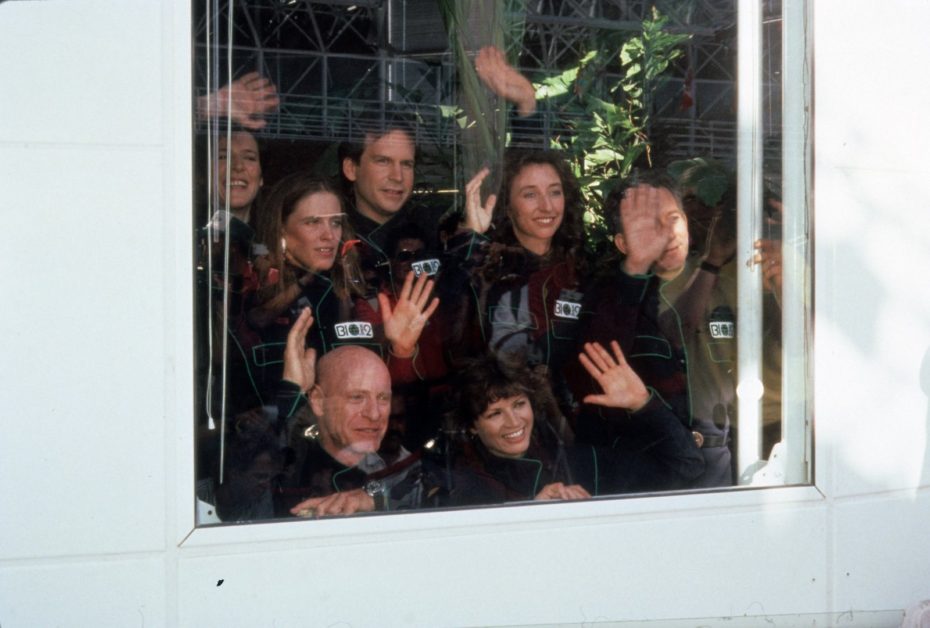
In addition to growing 80% of their own food organically and otherwise sustaining themselves in their closed environment, the crew members conducted their own research studies which involved manipulating the biosphere without affecting the planet.
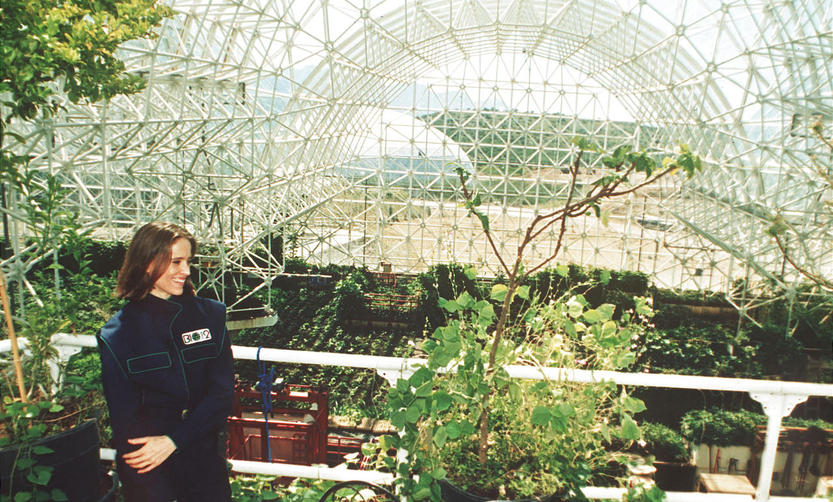
The experiment ran into trouble almost immediately. By the spring of 1992, the Biospherians had lost a significant amount of body weight, and they reported continual hunger on the low-calorie, nutrient-rich diet developed by crew member Roy Walford. They ate so many sweet potatoes that one crew member, Jane Poynter, reportedly started to turn orange.
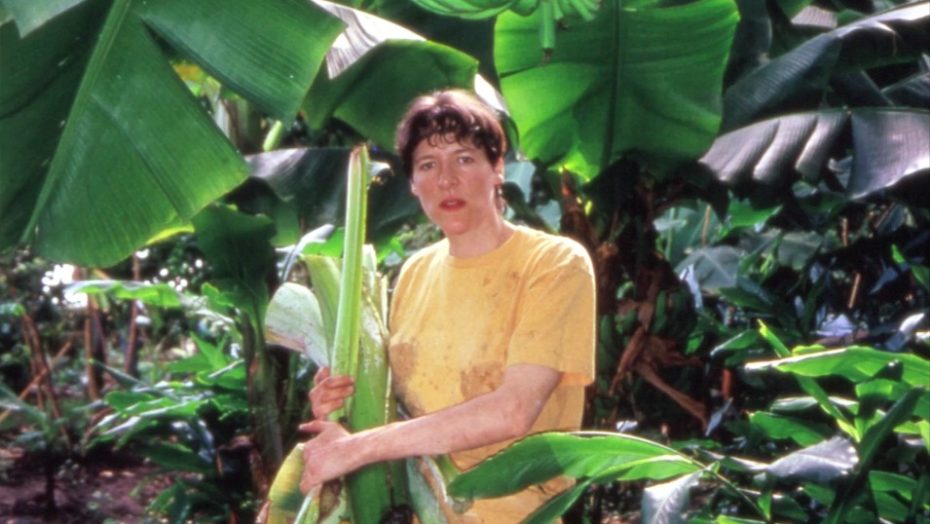
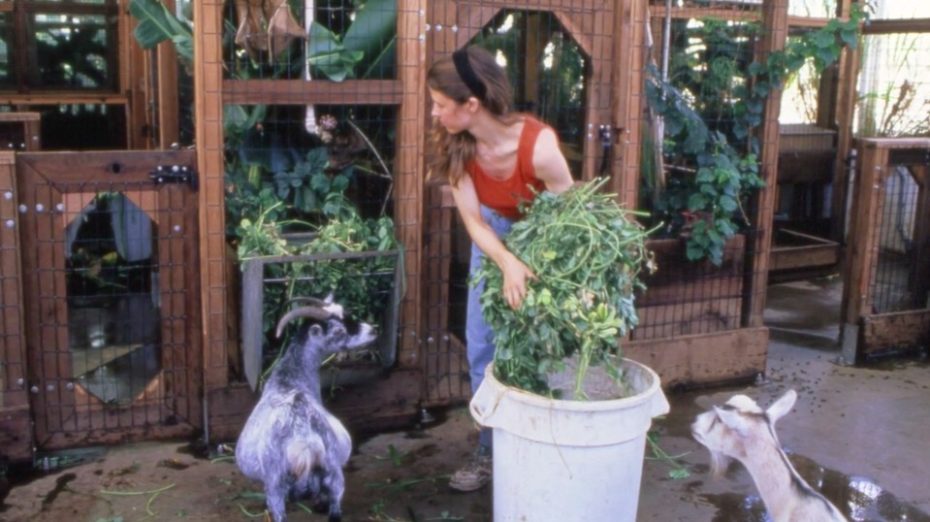
Their chickens didn’t produce enough eggs, farm animals were using up valuable resources and had to be slaughtered, most vertebrate species and all of the pollinating insects inside the biosphere went extinct, ants and cockroaches thrived, crew members ate seeds that were intended for growing crops, and abnormally high cloud cover hindered food production. The cloud cover also contributed to low oxygen levels in the biosphere, which became a serious issue for the mission.
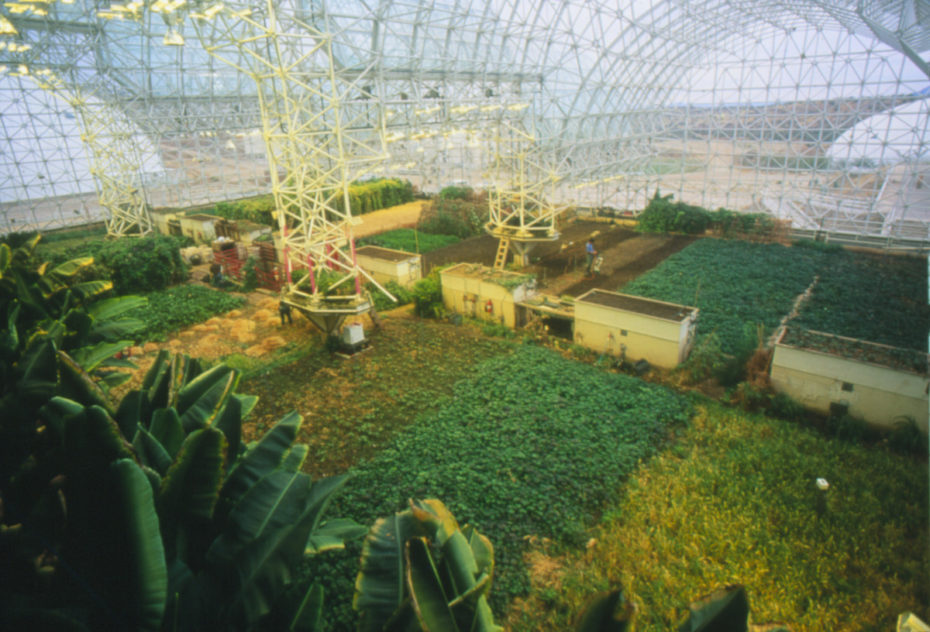
Oxygen levels began at around 20 percent, but had dropped to 14.2 percent after seventeen months, causing breathing difficulties and lethargy for the crew members. Poynter described the effect that the lack of oxygen had on the crew in a TEDTalk: “…we were dragging ourselves around the Biosphere. And we had sleep apnea at night,” she said. But the environmental issues weren’t the only problems the crew members faced. The eight Biospherians were also running into problems with one another.
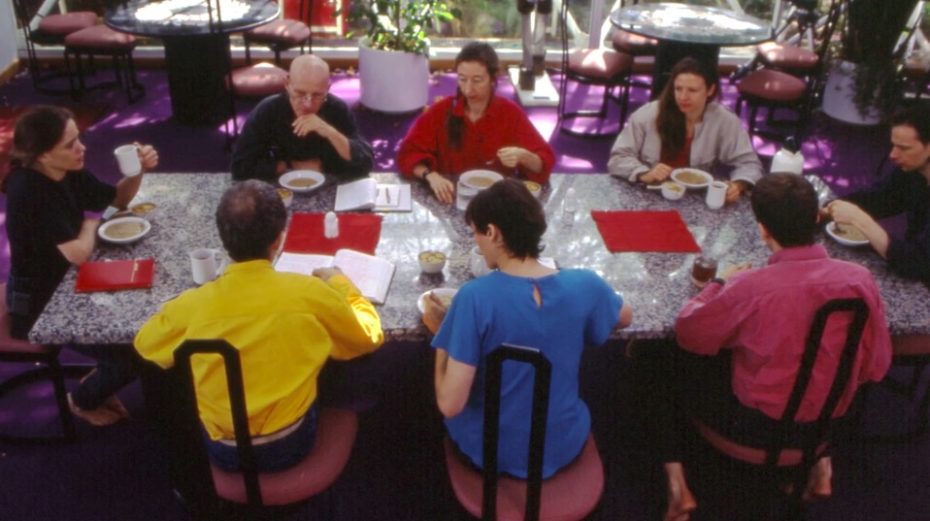
Being isolated for two years with only seven other people took its toll on the Biospherians, and they soon found themselves divided into factions and fighting about the goals and direction of the project. Fortunately, the experiment didn’t take a negative toll on all of the relationships between the crew members. Two of them, Jane Poynter and Taber MacCallum, who were dating when the experiment began, got married shortly after their exit on the Biosphere lawn.
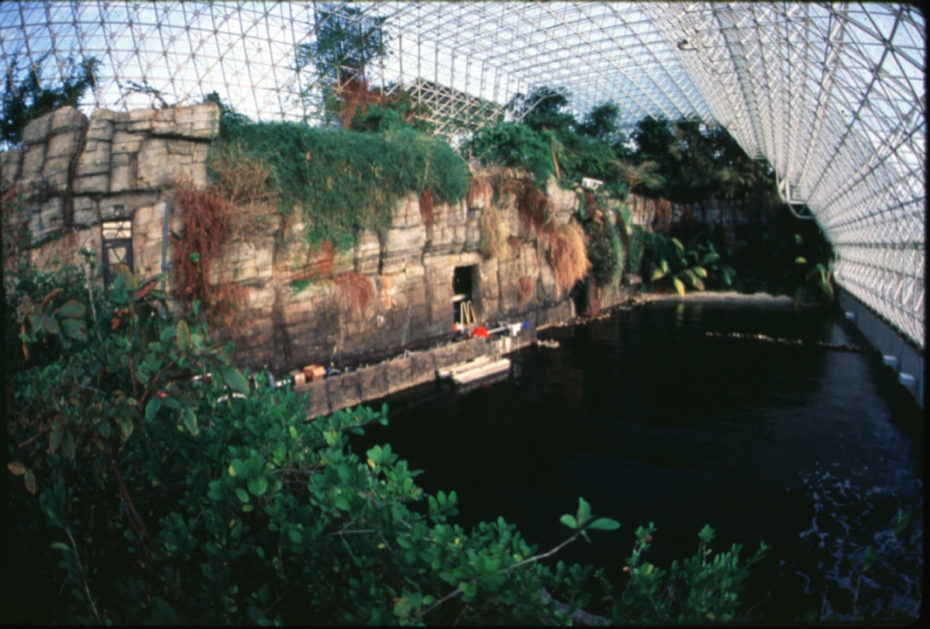
The costly experiment was highly publicized and faced much criticism. Twelve days into the mission, Poynter injured her finger on a threshing machine and had to be evacuated for medical attention. When she returned hours later, she had a duffel bag with her. She claimed that the bag contained only items such as spare parts and plans, but the media seized the opportunity to criticize the experiment, and people questioned if its integrity had been compromised. The mission faced further criticism when the oxygen situation became so dire that the choice was made to pump outside oxygen into Biosphere 2. This decision in particular led many to call the experiment a failure.
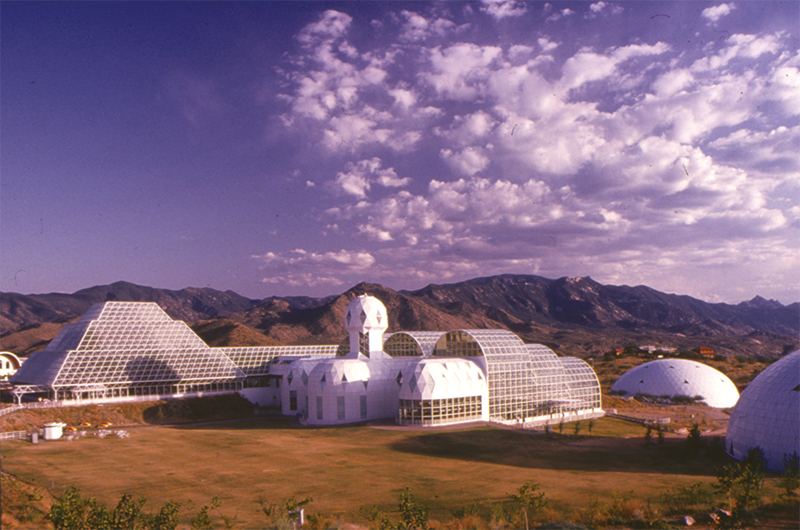
And then there were the cult accusations. Even before the biosphere launched, a journalist for the Village Voice, Marc Cooper, published several exposés strongly insinuating that John Allen, the influential “mastermind” behind the Biosphere 2 project, was in fact the leader of a doomsday cult who preached the imminence of a nuclear Armageddon and held that Western civilization had already collapsed. Cooper found a book on cults published in 1969 which featured a whole chapter on John’s New Mexico counterculture known as Synergia.

Back then, Allen was known as Jonny Dolphin and lived with fellow members of Synergia on a commune where he also founded a theatre group called “Theatre of all Possibilities”. According to an article from a San Francisco paper in 1978 The Progress, a member of the theatre group alleged the commune had “cult characteristics using psychological humiliation and corporal punishment to keep members in line”.
Cooper also reported the “biospherians had little academic training as scientists”, and were chosen largely because of their connection to Allen’s commune and beliefs.
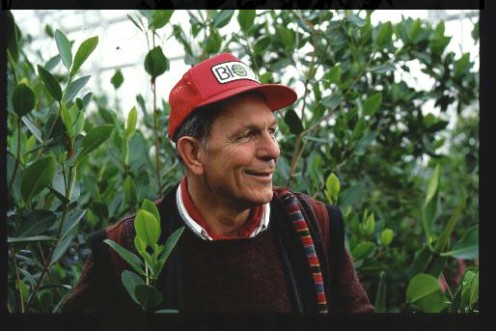
In an archive post on Reddit.com, user GOpencyprep shares an insider story from his father who worked at the Biosphere 2 from 1985-2004, starting as a construction worker and later in maintenance. In his fascinating submission, “How I ended up with a real cult idol in my living room”, there are some pretty unsettling claims about the project and its origins ….
Part of his job was that he would be working with a constant rotation of candidates who were vying to be part of the next sealed experiment. One of the benefits of that rotation was my dad would hear about all the bizarre sh*t Allen and his fellows were up to…The group had established a commune “dormitory” style living area in an old blockhouse that was an old tuberculosis commune…The group would get together every Sunday and have breakfast at the blockhouse along with all the candidate hopefuls – Allen would select one candidate to pick on, he would verbally abuse the person, insulting them and making them feel like trash, and also hit them … some kind of bizarre motivation tactic.
It gets even weirder…
My dad says that the cult also had ties to several celebrities … in the foundation tunnels of the block house [he] discovered a weapons cache (AKs) donated by Marlon Brando, whom my dad met and said there was no legit or official reason for him to be visiting a large scientific venture in the Arizona desert.
Biospherians dispute claims of cult ties and maintain that John Allen’s intentions to breed and propagate humanity on another planet were overblown by the media. Jane Poynter and Taber MacCallum, Biosphere 2’s Romeo and Juliet couple, say space colonization was only a distant goal. Learning about the Earth was the immediate mission.
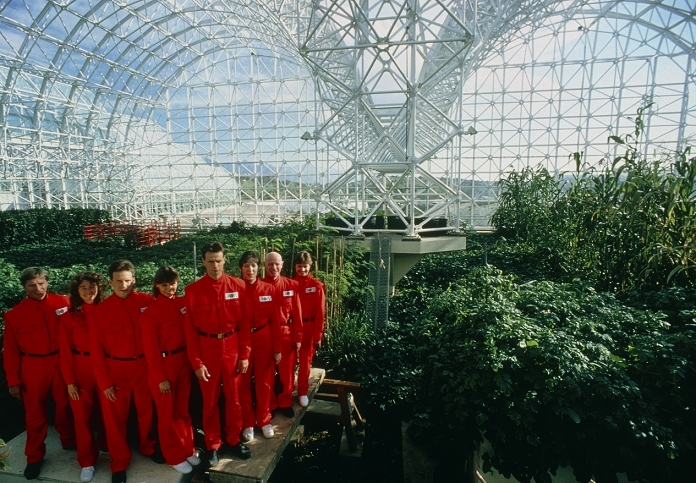
Nor do the crew members see the first mission as a failure. They were able to discover the cause of the low oxygen levels, which was attributed to the soil. “We had put too much carbon in the soil in the form of compost. It broke down; it took oxygen out of the air; it put CO2 into the air; and it went into the concrete. Pretty straightforward really,” said Poynter in her TEDTalk. Jayne is now a Chief Executive Officer of World View Enterprises Inc., which will be taking Voyagers to the edge of space in a capsule using a high-altitude balloon.
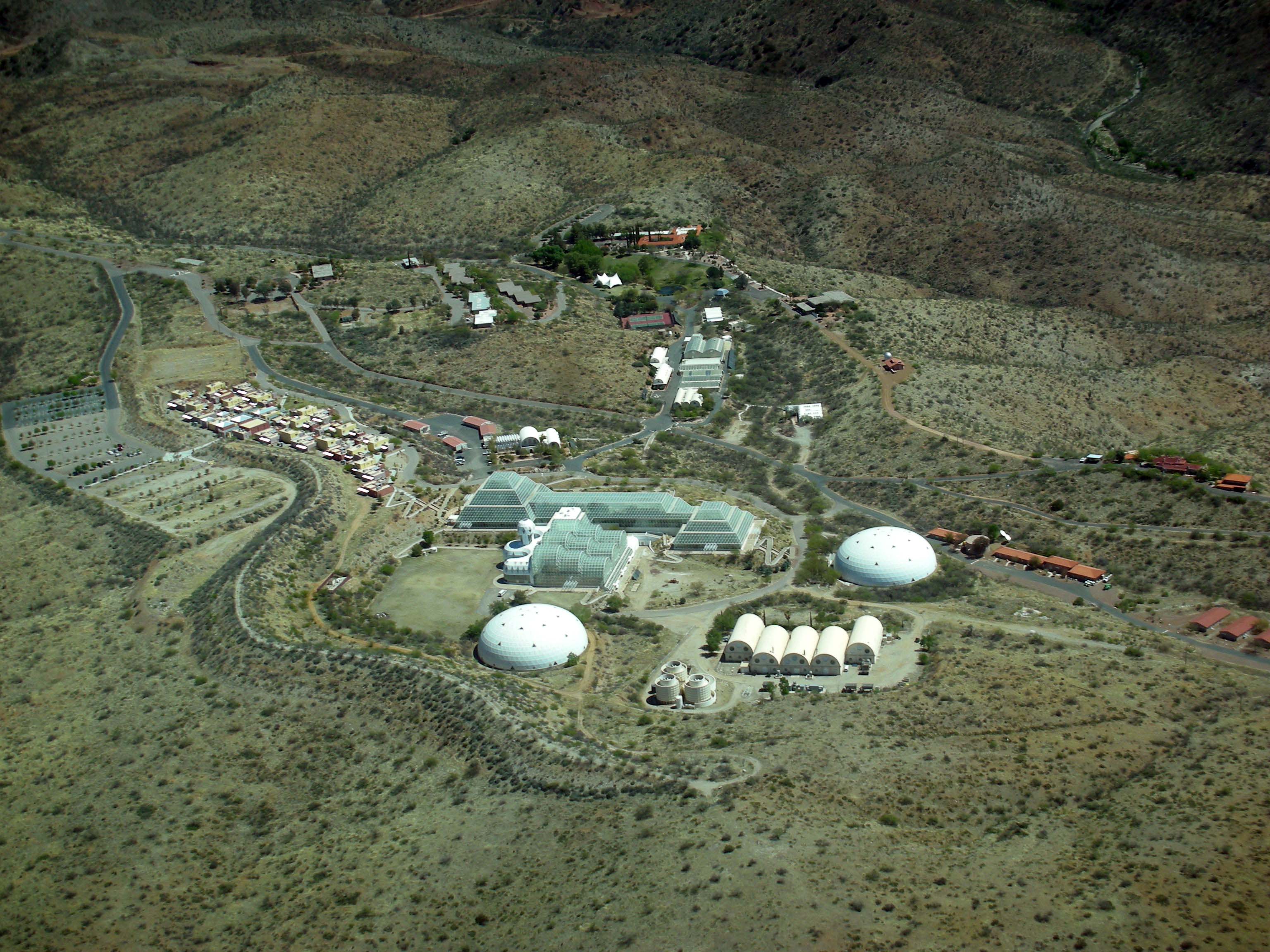
(c) Daniel Lobo
The results and issues from the first mission were used to make improvements to Biosphere 2, such as sealing the concrete to prevent the absorption of CO2, before a second closed-system mission began in March 1994. Although the second crew was able to achieve complete sufficiency in food production, the mission was ended after six months in September 1994, due to management disputes and the dissolution of the company that owned and managed the site.
According to our insider source via Reddit:
Edward Bass (the money man behind Biosphere 2) apparently started to come to his senses and “asked a federal court … to dissolve the partnership between the financial arm of Biosphere 2…and its managing arm, run by the controversial … John Allen”. Other affidavits describe “threatening and irrational” behaviour by some of the managers. Federal marshals swooped down on Biosphere 2 on Good Friday and barred … Allen and other leadership / Synergia members… guilty of gross, even deliberate mismanagement of personnel and money.
And in case you were wondering about the cult head in the living room… (there’s a picture of it here).
Near the Biosphere was a wash with a firepit and in the center of it was a tree on which the head in the picture was carved out, where they would go to do whatever weirdness they did. My dad knew about it, and the morning FBI showed up in 8 unmarked cars and began arresting the leadership (read: Synergia members) of the biosphere, my dad went down to the wash and cutoff the cult head and brought it home. And that’s how I ended up with a cult head in my living room.
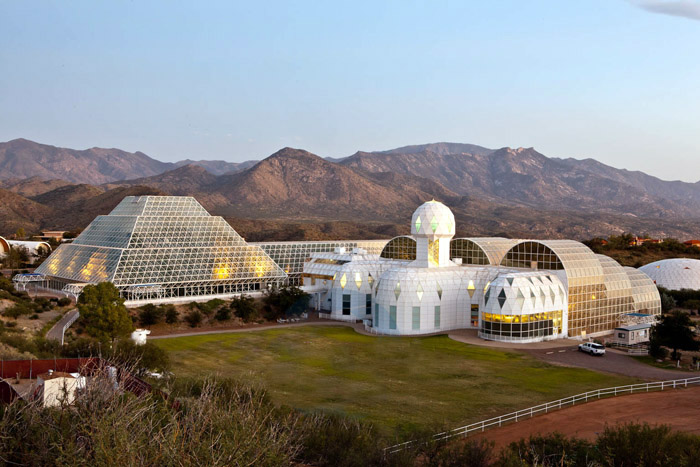
Since then, Biosphere 2 has not been used for another closed-system experiment, but it has still proven useful as the world’s largest earth science laboratory. Columbia University managed the site from December 1995 until 2003, and used it to make the first links between rising carbon dioxide levels, ocean acidification and reduced coral growth. In 2007, the University of Arizona took over research there, and it is still used for many different studies.
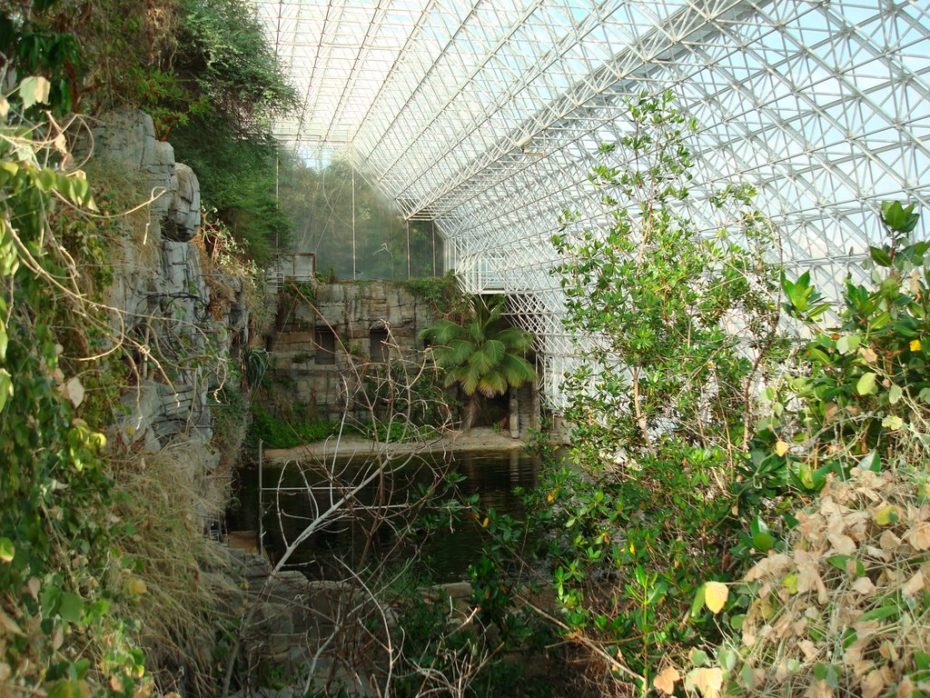
(c) Paul R
A cult, survivalist game, or just a group of scientists and freethinkers who built an ark in the desert? Twenty years after the project’s launch, questions still linger about what really happened there. TIME magazine listed Biosphere 2 among the top “100 Worst Ideas of the Century”, meanwhile, the United States government is predicting manned missions to Mars by the mid-2030s. For those looking to escape this planet and get a sense of what the future might look like on another one, the Biosphere 2 is now open to the public for tours and as a summer science academy. We’re also excited to say a new documentary on the venture, Spaceship Earth will be available on May 8th, 2020 on Hulu:



